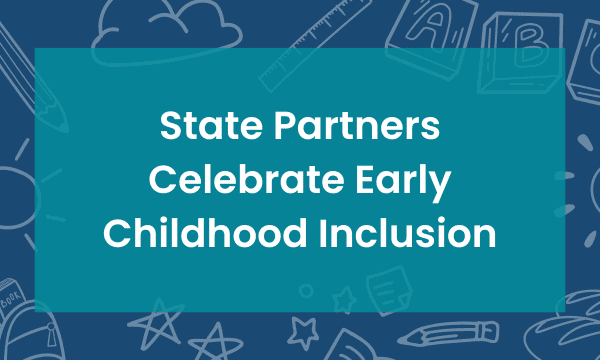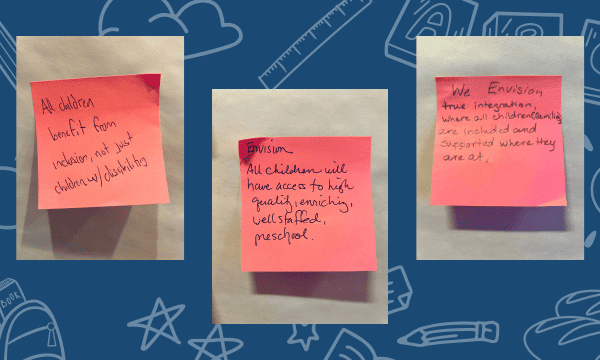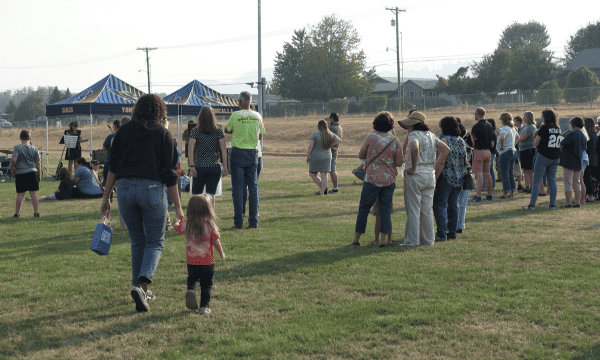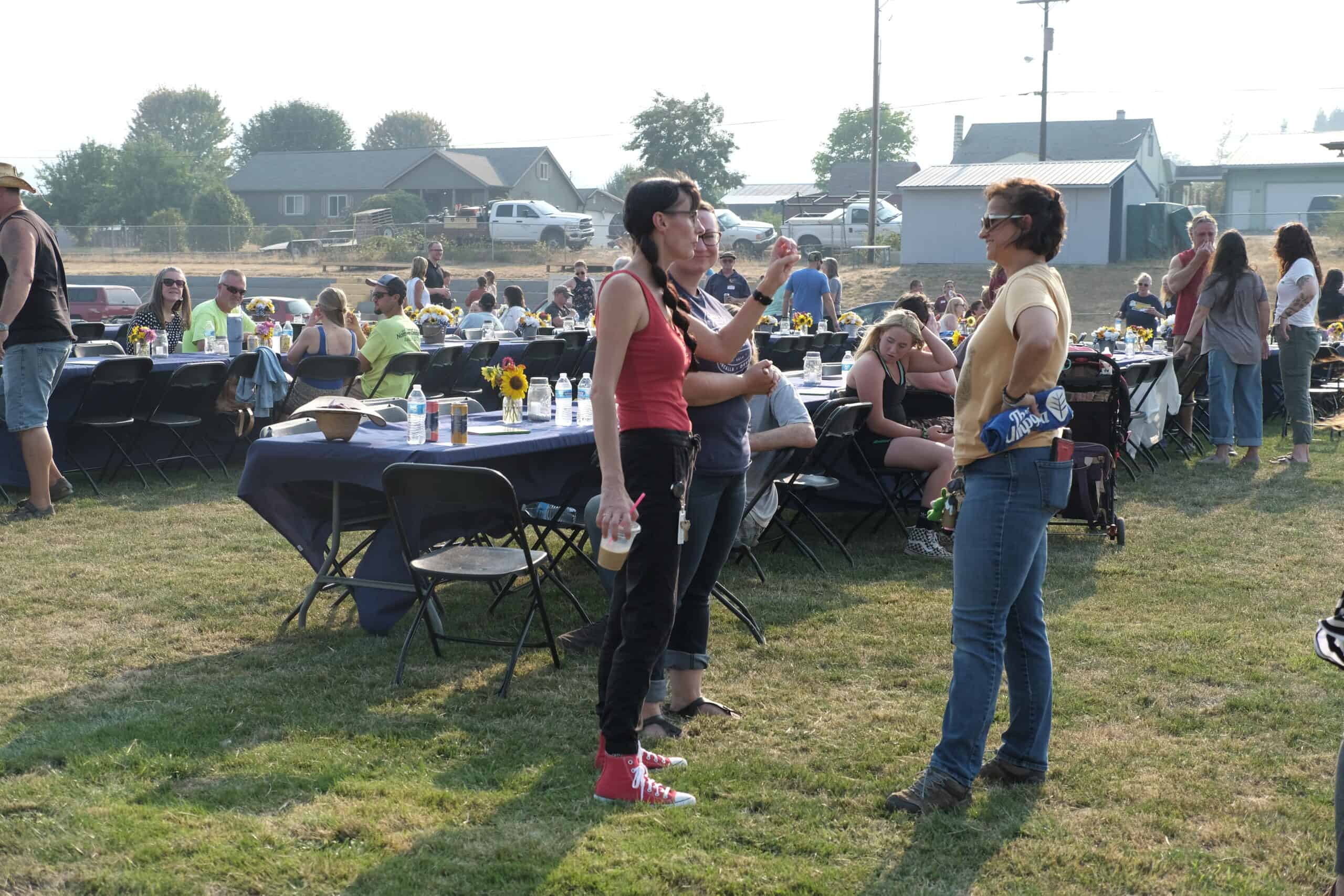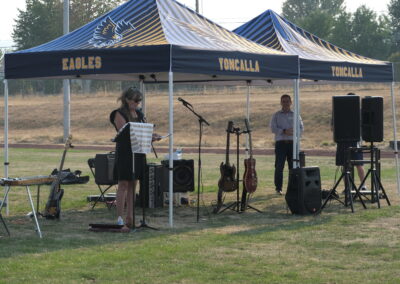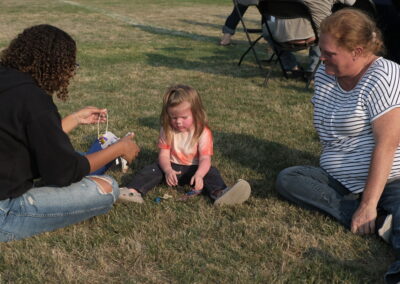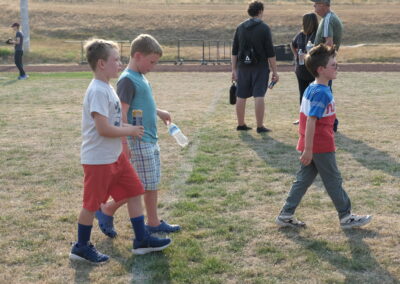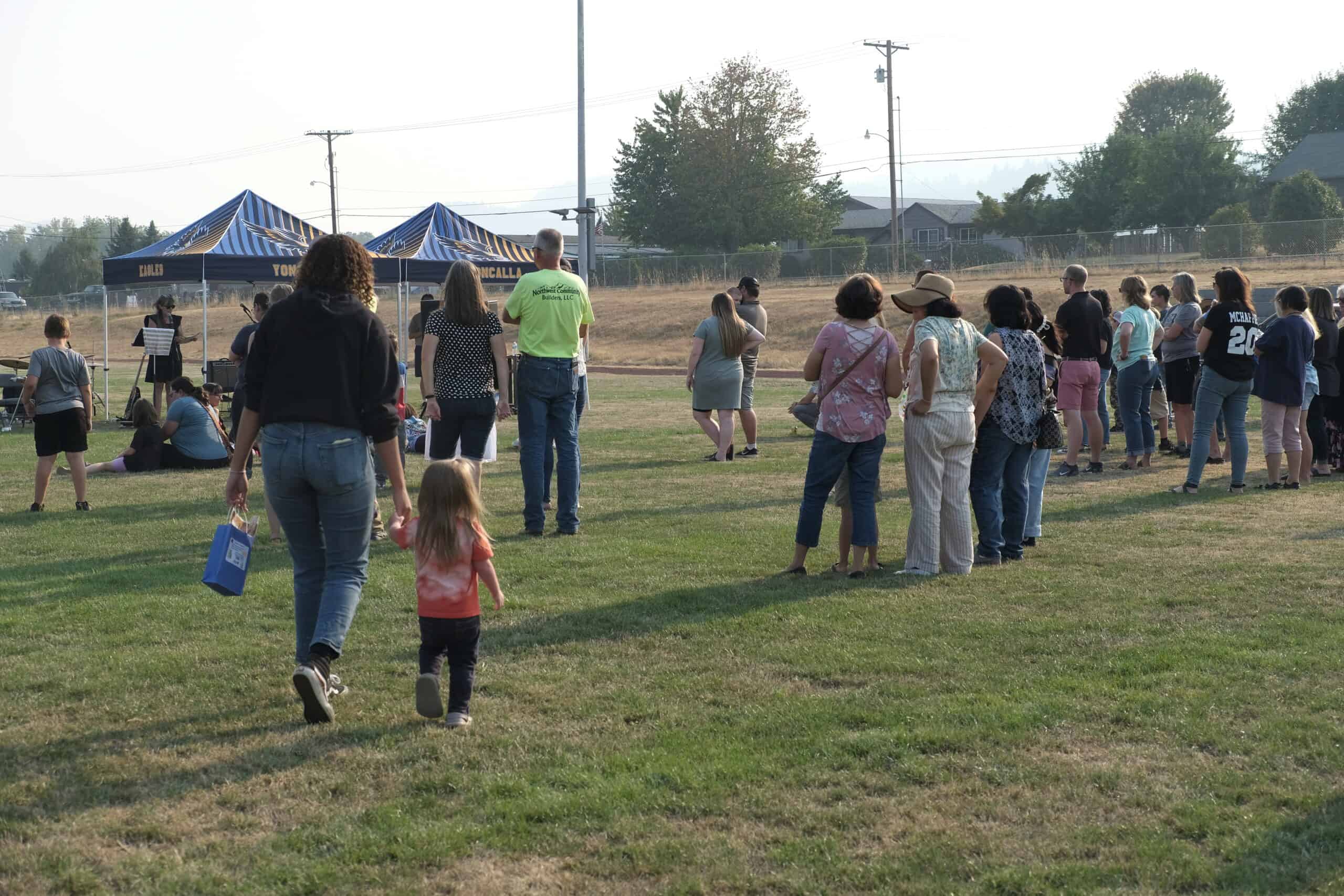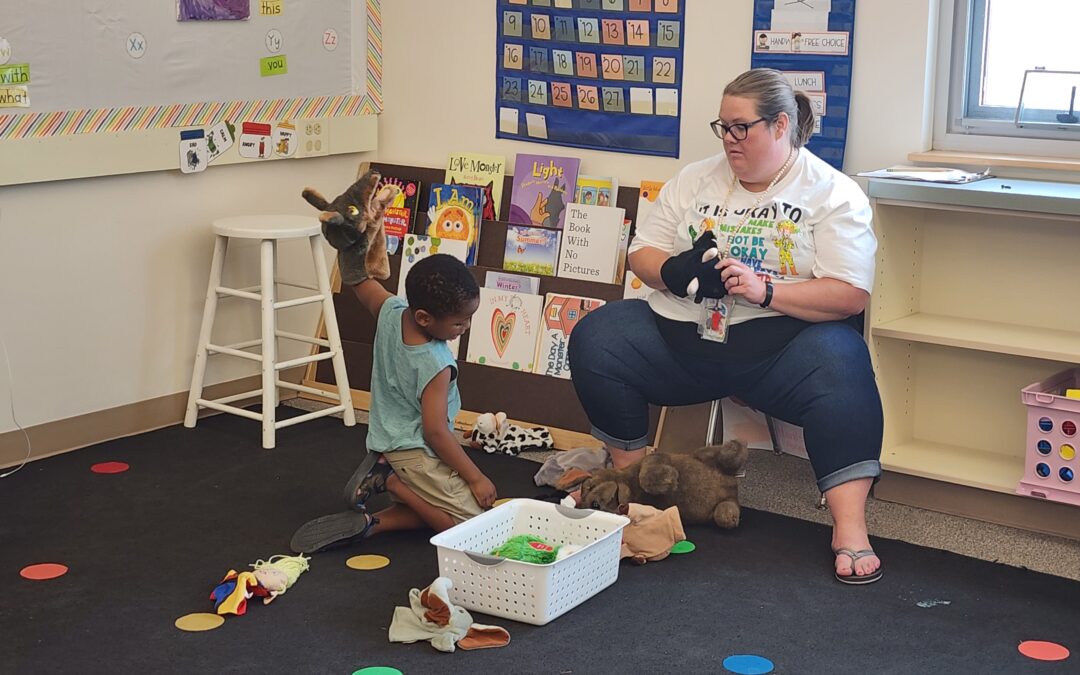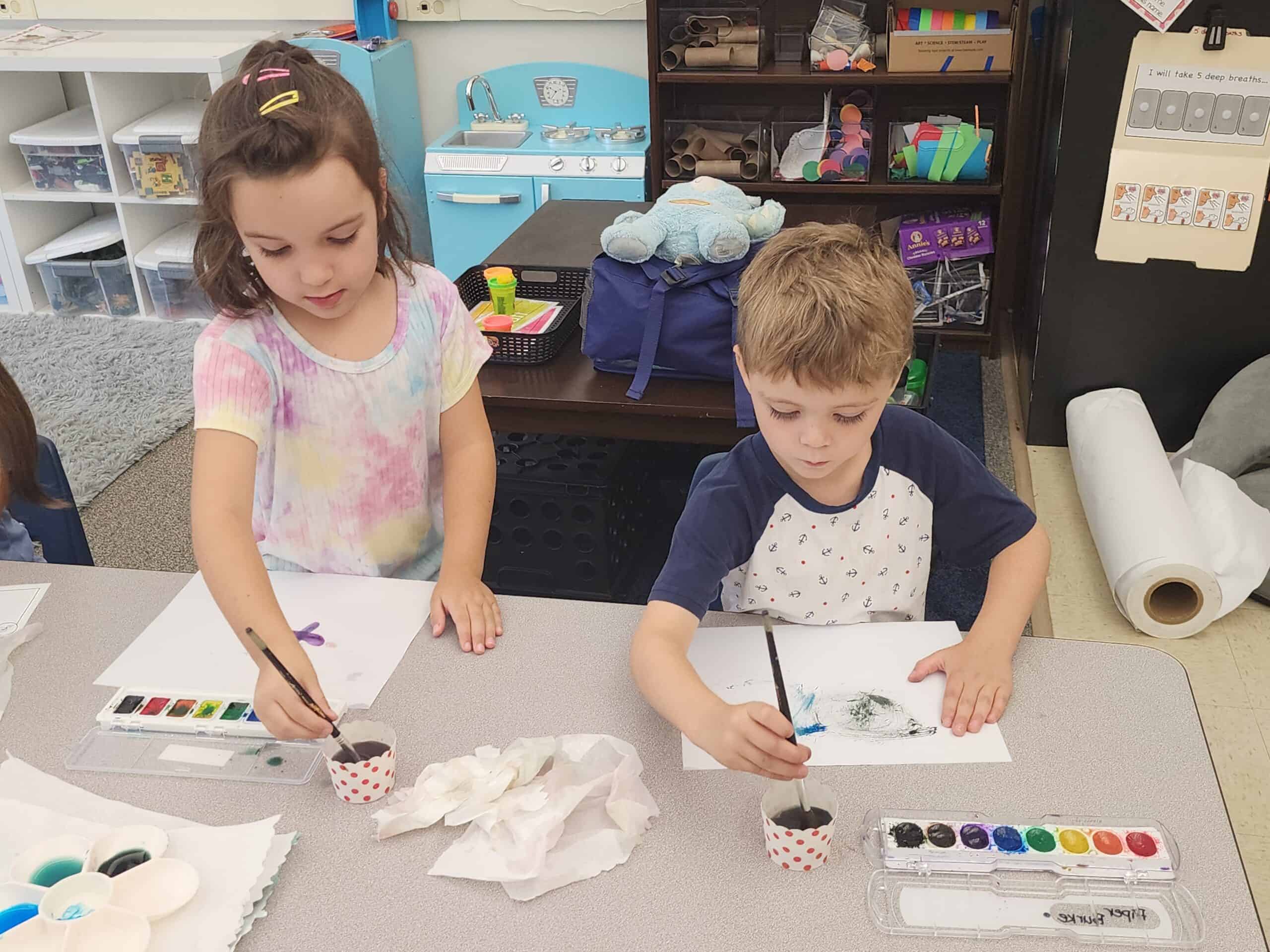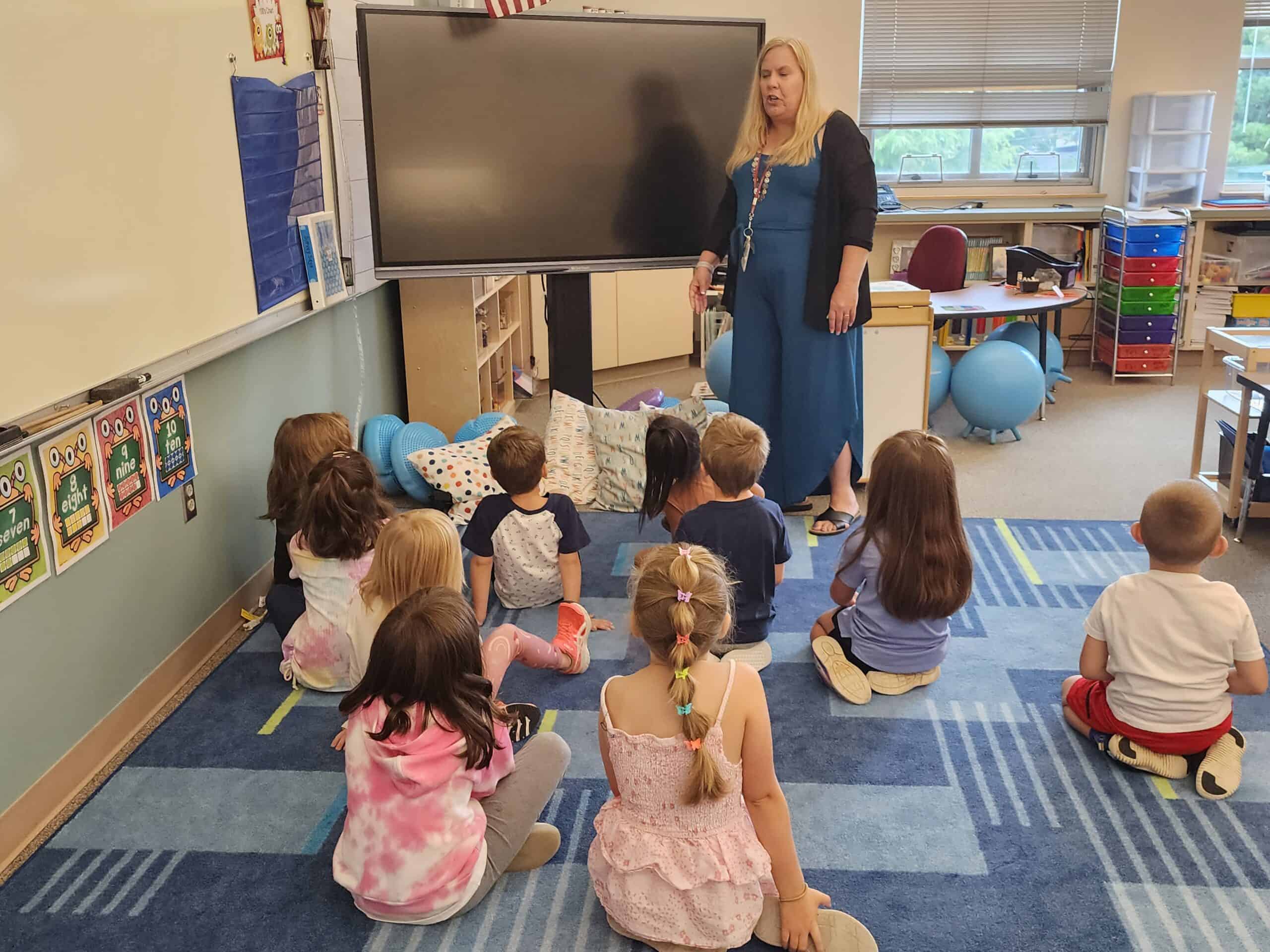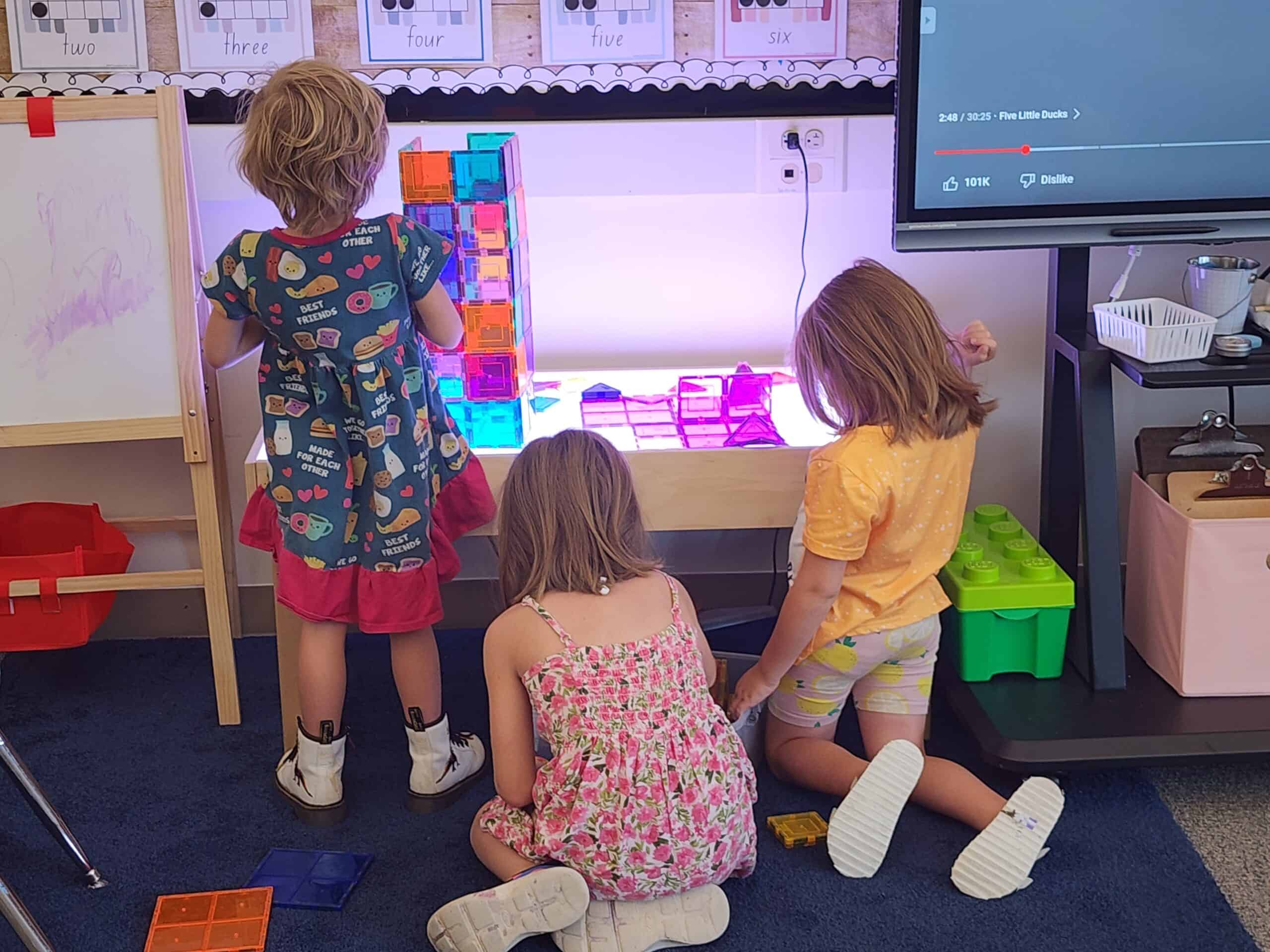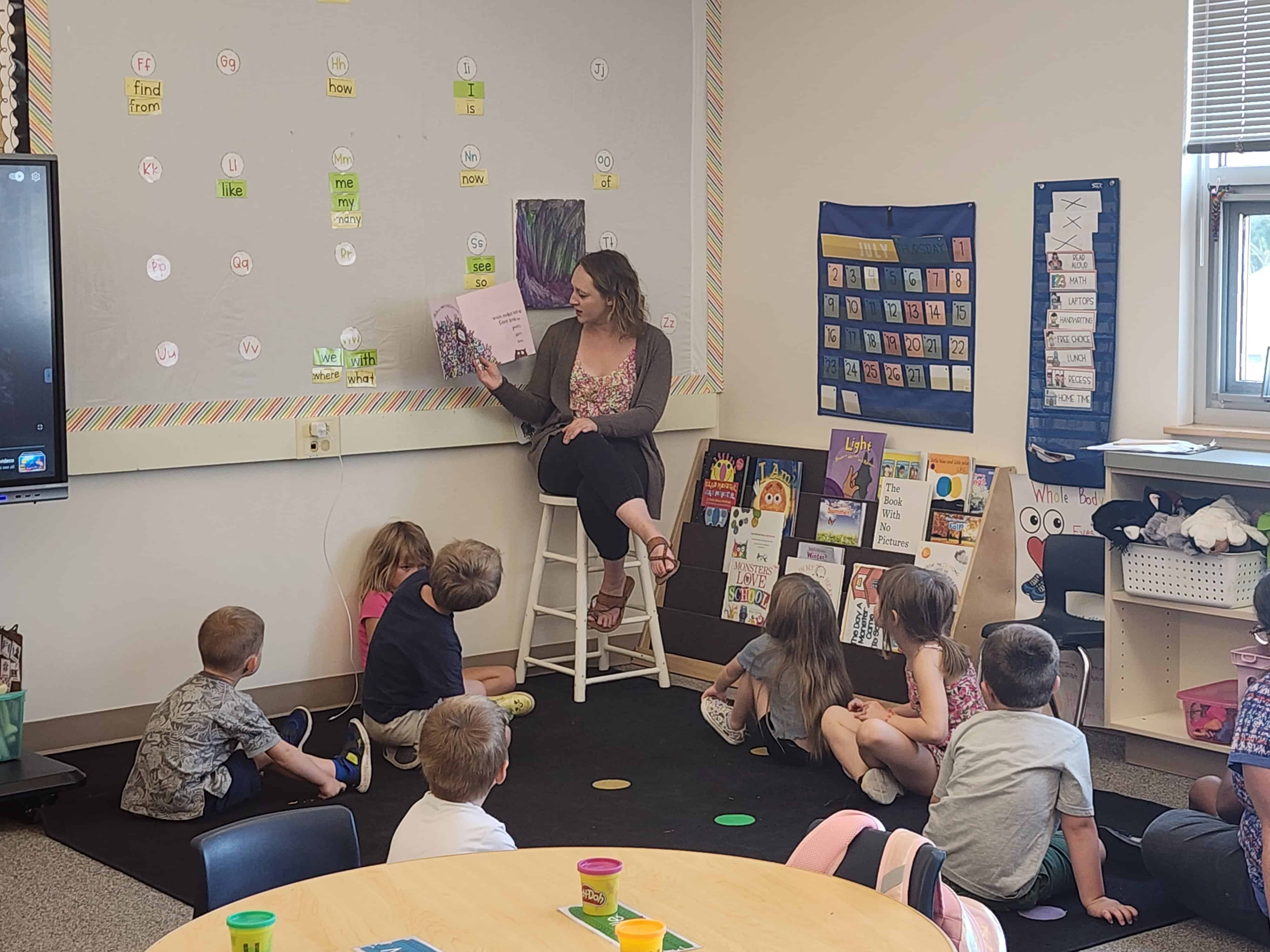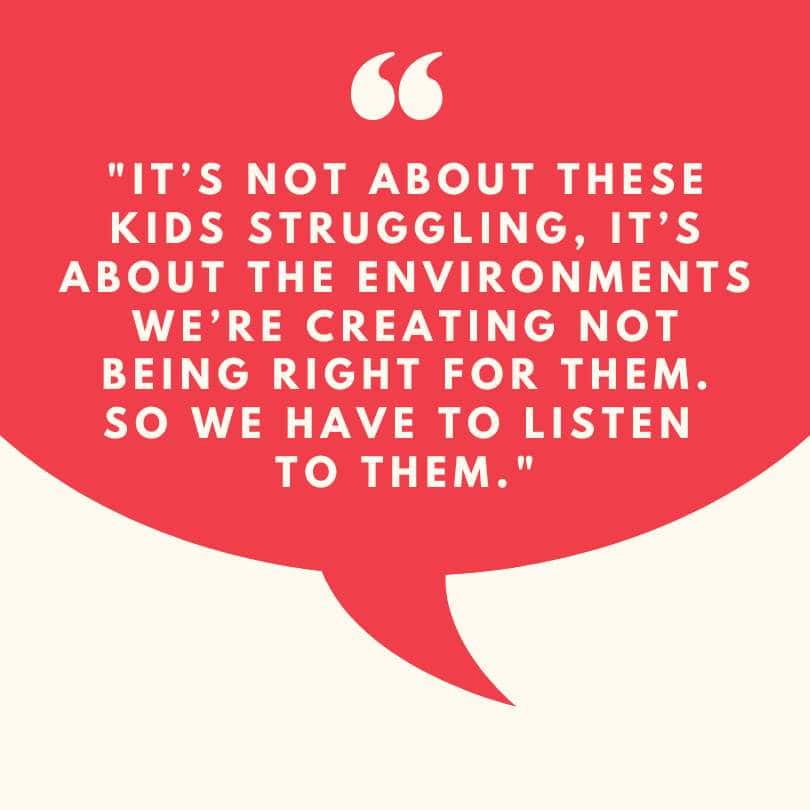That sounds like an amazing flow to a day, I would have loved that as a kid!
I was teaching Parent Ed the other day, and one of them told me, “My kid came home after camp yesterday and said, ‘I had an amazing time at school, I just got to play all day!’” And I said, that’s exactly what we want, and I can tell you exactly what your child learned yesterday through all of that. They don’t just sit at their desk and do worksheets the whole – they get to play and build with intention. We do a lot of talk with parents about intentional play and using different materials at home to expand their child’s learning experience.
We gave them kits to bring home this year focused on social-emotional learning since it’s August and they’re gearing up to go back to school. The kit included Emotionoes, which are Dominoes with different emotions on them, and you label and match up emotions. When you’re playing it with your child, you point out the emotion, ask the child to mimic it, and even ask questions about what they think happened to make the person feel that way. Those questions help guide the kids toward social-emotional learning.
We also talk about how even simple toys, like shape blocks, can be turned into so many things with intention. You can learn math, literacy, social skills…I told the parents, “You can tell me any object that your kid likes to play with at home, and I can tell you three different ways you can turn it into social emotional learning.” One of the moms was like, “Okay, I dare you. My kid likes those little cubes that you can stack together to build people, cities, anything. How does that turn into social learning?” So, we talk about how, when they build the people, notice or give them personalities. And when those characters start to take action or attack another character, ask why they are doing it, or why they are upset. Ask what’s happening in the setting, or pick up a character and introduce their feelings, too. Then ask your kid what they would feel like under those same circumstances. Those questions teach kids to observe experiences, to understand the underlying emotional states of a situation, even if it is make believe.
The parent responded with, “Wow, you really can come up with a way to learn from anything,” and I responded, “I’ve been teaching for 26 years. I didn’t just randomly pick up objects and know how to do intentional learning, it took time.”
It’s great that our district is starting to understand the importance of social emotional learning. Last year, we got these cabinets to fill with loose parts. Even our title class has gotten involved as a part of our Children’s Institute grant, so we’re figuring out how to incorporate loose parts into title, too. For example, reading a story and then sitting down and trying to figure out, okay, if these are the different parts, how would you create a scene from the book, or use puppets to act out a different ending? It’s really nice to get the different parts of our school involved in what we’re starting out in our preschools and kindergartens.



